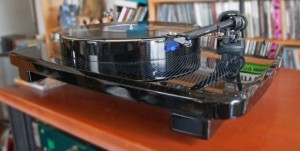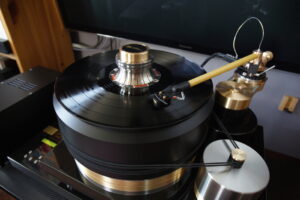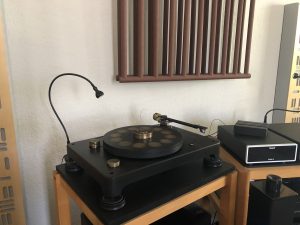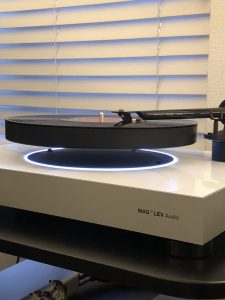Lublin is a city in the south-east part of Poland and the capital of Lublin Voivodeship (province). The name Lublin, exactly the same as today which is quite rare, first appeared in chronicles in 1228. Just like Kraków comes from the name of Krak, a legendary ruler residing on Wawel Hill, also Lublin comes from a name Lubomir. In Lublin in Fabryka Samochodów Ciężarowych cars like FSC 'Żuk', and later FSC 'Lublin' were produced. In 1974 Lublin witnessed a formation of Budka Suflera, one of the most important Polish blues-rock, progressive rock, and later rock and pop bands.
It is not quite clear when the band was formed as different dates are given. In Wikipedia Jerzy Janiszewski says that after Janusz Fifowski came back to the position of Lubelski Dom Kultury in 1972 he printed some posters with information about a blues-rock bands called "BUDKA SUFLERA" being a part of LDK's activity. These discrepancies could come from the mistakes made by authors or maybe of the unclear status of the band that at beginning was experiencing lot of member changes. Maybe that is also why the Wikipedia input does not include an information about one of the first drummers that played with the band Kazimierz Grymuza, who, after a short time, was replaced by Zbigniew Zieliński.
At the time Lublin's music environment was particularly active. Bands formed and disbanded rapidly. A member of one of such 'short-term' bands, apart from above mentioned drummer, Kazimierz Grymuza, was a guitar player, Janusz Sikora. He never became a professional musician but had a chance to play, among others, with Henryk Mazurek, the first solo guitar player of another Lublin based band, Bajm Bajm (source: Maciej Skarga, Sikora Turntable – z miłości do winyli, "LAJF – Magazyn Lubelski", see HERE He never became a professional musician but had a chance to play, among others, with Henryk Mazurek, the first solo guitar player of another Lublin based band, Bajm (source: Maciej Skarga, Sikora Turntable – z miłości do winyli, "LAJF – Magazyn Lubelski").
Sikora
Mr Sikora did not become a musician. He worked for several different companies and finally, after turning 30, he sold his Fiat 126p, or so called: Maluch, and started his own business—he became a locksmith specialized in brass products. Company Allmet has been on the market for over 30 years specializing in metal products. But its not the only thing they do.
As Mr Sikora says, the machines, while not working for his main business, allow him to take on his passion audio. Years ago Mr Sikora was known due to his involvement in Burdjak & Sikora brand manufacturing tube amplifiers, but a few years ago his focus shifted to turntables. His professional experience, knowledge and experience of his workers, as well as an advanced machine park are perfect means for realizing his audio ideas. He does not use CNC machines as these come handy only when large quantities are produced and as we all know high quality audio is rather about small batches and not mass production.
His story sounds somewhat familiar. Mr Sikora bought, not so cheap, turntable to indulge his need of high quality sound. It sounded fine but not exactly as Mr Janusz expected it to. So he designed his own deck, used a tonearm he bought and... it sounded better although still not 100% satisfying. But he knew that he was on a right track. Using trial and error method, also learning from other manufacturers he finally arrived at the point when he could proudly present his achievements to the public. For the first public presentation he chose AudioShow in Warsaw. J. Sikora firm was ready to conquer the market.
Sikora REFERENCE
Today Mr Sikora offers two turntable models—Basic and Reference—and two phonostages: Basic and Reference. When looking at them what strikes anybody who knows a thing or two about audio is how well made these products are. It's a "boutique" manufacturer (I mean the audio part of the company). Such manufacturers often offer really good sounding products with not so cool, to say the least, aesthetics. The Reference model under review easily matches in terms of its looks, of make and finish best mass-loaders I reviewed including: Transrotor Argos and Kuzma Stabi XL2 among others.
The Reference turntable is in fact an already uncompromising concept of the Basic model taken even further. There are six different materials used for this deck, four DC/PAPST motors with a single controller; platter is a combination of three materials, statically and dynamically balanced; we used even more advanced main bearing that is made of steel, self-bonded carbide and zirconium; user might install up to three tonearms of his choice on this deck; total weight – 108 kg.
source: company's website
Company's paper points out few key elements of this design, but of course having an actual look at the device reveals even more. If you ever saw above mentioned Kuzma Stabi XL you should realize that it clearly inspired Mr Sikora. Being inspired by a product of another designer and developing this inspiration towards a chosen direction is a special sort of tribute paid to this designer.
The Reference turntable consists of few main elements such as: a plinth with a main reversed bearing, platter, four motors, an aluminum base with controlling circuit and power supply. Of course to have a complete setup one needs a tonearm and cartridge too. Again, an inspiration with Kuzma's works becomes obvious when one realizes that Mr Sikora delivered his turntable for test with Kuzma 4 Point arm—one of Stereophile's Michael Fremer's favorites, but also the first choice of Mr Sikora. He believes that when it comes to tonearms Franc Kuzma is a genius. For this test we received deck together with a special version of 4 Point, the 14" one. The CAR-50, MC cartridge with Microridge stylus and 4N silver coil wire came from the same brand.
Kuzma
4 Point 14" Tonearm
The Kuzma 4Point tonearm is one of the most interesting and the best tonearm money can buy. Its design is similar to uni-pivot but it sports a unique bearing configuration of four points. For increased stability and better resonance control arm features lateral and vertical oil damping. Tube features a conic shape and continuous silver wiring from the pins on one side to the RCA sockets on the other. Interconnect terminated with silver Bullet Plugs by KLE Innovations uses exactly the same silver wire. Arm features also a great VTA adjustment mechanism.
The counterweight consists of two elements placed on two pivots. One placed the main one on lower pivot—this one is chosen basing on the weight of the cartridge one intends to use. The actual VTF is set using the second, smaller one that allows precise adjustment. The version we got for the review is the 14'' one and it's probably the first official review the includes this version of the arm. Previously we tested the 11" version together with Kuzma Reference XL2.
CAR-50 cartridge
CAR-50 is the top Kuzma MC cartridge. For its coils manufacturer used 4N silver. It also features a Microridge diamond on a Sapphire cantilever. It delivers an output of 0,3 mV, and offers a 10x10-6cm/dyne compliance. Its body is made of brass and aluminum which makes it relatively heavy. Its regular shape makes setup rather easy. Kuzma cartridges are custom made in Japan—we don't know which manufacturer exactly does the job, but we do know that it is a one with "50 years experience".
A few simple words…
JANUSZ SIKORA
Owner, designer
Mr Sikora (on the right) and helping us with turntable setup Jerzy "Szela" Stankiewicz – musician (Texasy), DJ and radio journalist.
WOJCIECH PACUŁA: How and when did your audio adventure start?
JANUSZ SIKORA: In the times of Technics and Pewex, meaning 1980ties replacing vinyl with CDs was supposed to offer us a better sound quality. Only it didn't. So after many experiments I gave up on digital sound and returned to the black records. The first high performance turntable I bought maybe 10 years ago—boy, was I disappointed! SO I had no choice but to create my own designs.
You're also a musician—what was your instrument, when did you play it and what kind of music?
Yes, I did play some music. In 1970ties everybody started their own bands. I played guitar, although, unfortunately, I never was a genius player, so after some not so successful years of trying I turned my interest to carting. I was even a member of our national team from 1975 til 1980. In 1980 I decided to give audio another try and with some help I built some tube amplifiers. At first I worked with my own father making stage amplifiers, and later since 1984, together with Olek Burdiak, we build amplifiers under Burdiak&Sikora brand.
Your sons also play instruments—which ones and where?
Robert and Jakub started a band called Crab Invasion. Jakub is the leader of the band, he plays guitar and composes music for the band. Robert plays bass guitar. Both of them also sing. They played on Open'er Festival, Off Festival, and Męskie granie. In 2013 they released their debut album "Trespass". Now they are working on material for their second album.
Is vinyl your exclusive medium or do you listen to digital music too?
For the last 8 years I've been listening to vinyl. I do listen to CD too, in my car. I can't imagine me going back to listening to CDs. Sound delivered by vinyl is so tangible, so real, so natural! I listen to music with my ears and my whole body, not with measurement equipment. I don't care about vinyl shortcomings (that exist according to technicians and engineers who believe only in measurement results).
SETUP
Most turntable I ever reviewed were placed on Finite Elemente Pagode Edition (today this version is called Pagode APS). I ordered my unit with a standard upper shelf and a "heavy duty" lower one, as it accommodates Soulution 710 and power supply for Ayon Audio Spheris III. Lower shelf can carry up to 120kg, while the upper one 'only' 60 kg. I could, of course, order a version with both 'heavy duty' shelves but I didn't want to.
So this particularly heavy turntable had to be placed on Mr Sikora's rack. Shelves are made of high quality aluminum, pillars are made of Inox steel and brass separated with a zirconium ball. Deck was placed on the top shelf and the power supply on the one below. By the way—that's probably the most good looking power supply I've ever seen. I think that if Mr Sikora could make a similar design preamplifier or power amplifier these could be very special and unique. Mr Sikora's rack was placed in exactly the same spot as Transrotor Argos did some time ago, and more recently also Transrotor Zet 3 Infinity.
Final tests using, among others, a mono version of Niemen's Sen o Warszawie and we're ready to rock'n'roll...
By designer's suggestion I decided to treat this turntable as a system. So I did not replace the tonearm nor cartridge. That's how I carried also other reviews before, such as: TechDAS Air Force One, Air Force Two, Thales TTC-Compact, Kuzma Stabi XL2 and many others.
All above mentioned turntables worked with RCM Audio Sensor Prelude IC phonostage and so did the Reference. For comparison I also used Mr Sikora's own Stereo Phono Preamplifier. Both phonostages were used together with Crystal Cable The Absolute Dream power chord.
SOUND
Records used for the test (a selection):
- Aidan Baker & Idklang, In The Red Room, Karlrecords KR021, "Test Pressing II" 180 g LP (2015)
- Bert Kaempfert, Bert Kaempfert – From The Original Mastertapes – Four Hits On 45 rpm, Image HiFi, 007, 45 rpm, 180 g LP (2004)
- Budka Suflera, Czas czekania, czas olśnienia, Polton LPP-011, LP (1984)
- Depeche Mode, Stripped, Mute 12 BONG10, 45 rpm maxi-LP (1986)
- Johnny Hartman, I Just Dropped By To Say Hello, Impulse!/Original Recording Group ORG 027, 2 x 45 rpm, 180 g LP (1963/2013)
- Kabaret Starszych Panów, Piosenki wybrane, Polskie Nagrania L0393, "Płyta wzorcowa", LP (1962)
- Keith Jarrett, The Survivor's Suite, ECM Records ECM 1085, LP (1977)
- Miles Davis, Kind of Blue, Columbia/Sony Music Entertainment/Mobile Fidelity MFSL 2-45011, "Special Limited Edition 05371", 45 rpm, 2 x 180 g LP (1959/2015)
- Miles Davis, Water Babies, Columbia Records PC34396, "Demonstration | White Label", LP (1976)
- Oscar Peterson, Exclusively For My Friends, MPS/Edel Germany 0209478MSV, "A | A | A Reissue Series", 6 x 180 g LP (2014)
- Polly Bergen, Four Seasons Of Love, Columbia CL 1451, LP (1960)
- Stone Temple Pilots, Shangri-La Dee Da, Atlantic Recordings/Music On Vinyl MOVLP1440, "Limited Numbered Orange Edition | MOV 000143", 180 g LP (2001/2015)
- Tsuyoshi Yamamoto, Autumn in Seattle, First Impression Music FIM LP 004-LE, "First 2000 Pressings" 200 g LP (2001/2011)
Let say that we measure time in audio business in so called "ancients" (a period of 3-5 years). Using such scale and audio company becomes something more than just an idea after a period of 1 ancient (1 An). After two ancients such company becomes well established on local market and maybe it already started to flirt with foreign markets. If it's a high end company it is the first moment one could really start to compare its products with well established competitors. Maybe it's not a time yet to get to the top of the hill but one should do that to learn what is still there to improve comparing with best products of the kind.
Obviously it is my theory and you don't have to agree with it. There are some exceptions from this rule as some companies reach such level sooner and some even later, but still—these are nothing more but exceptions. Solid, well run companies follow the path I described. One can recognize them by the quality of make&finish as well as of their performance, and by the reception by industry members (journalists, distributors, dealers) and by customers who actually bought their products.
Sound
I can assess J. Sikora Reference by its make&finish and describing my perception of this product. Make&finish, performance and ease of its operation place it clearly among the best turntables I know. I don't know all the best decks in the world—that's clear, but some of those I reviewed belong, together with this Polish turntable, to the elite high-end club.
Reference is different than any other member of this exclusive club and I'm not going to call it a 'king of all kings' as such statement could not be taken seriously. Why? Because at such a high level of performance one can't really name one, clear leader. Even smallest details matter and might become key issues in given system; one should rather talk about preferences and not about objective facts or hard proves of one turntable being better performer than the other.
So released of this pressure I can boldly claim that Mr Sikora's Reference is a particularly interesting, remarkable product. While listening to it one can expect everything and anything one would from any top high end system. First of all the noise level is extremely low—it's a very, very quiet device. The level of noise produced by a stylus moving along the groove was extremely low, also there were very few pops&cracks. Never before have I heard such a 'quiet' turntable. Air Force One, equally quiet, delivered bit more pops&cracks and delivered them in a bit different way separating them from music completely. Reference brings these two elements of the audible sound closer while masking the mechanical noise even more.
So what one can hear is a large scale, very energetic sound. It also seems to "separate" both range extremes further away from each other. Both treble and bass are presented in a very powerful, distinct way, there is not even a hint of a roll-off, of any rounding or softening either at the bottom nor at the top of the range. And there is no emphasis on any of them either. By 'separation' I mentioned I mean that an impression of a better extended range is created, it's just as if bass went deeper, and treble higher. Comparison with any other top quality turntable proves that it's not about emphasis on range extremes but rather about showing their real value, just as if other turntables couldn't really do it to the full extent, as if they were not fully committed whereas Reference is.
These two elements, particularly quiet performance, and this incredible range extension are supported by another particular feature – sound stability. This is an element offered only by the best products and here I perceived it as something completely natural. I played record after record and each time I entered the world of music at once, I didn't have to interpret anything, I didn't have to adapt to what I heard. I heard everything just the way it was.
It was a remarkably precise presentation which could be expected from product of this type. Reference represents already such a high level of performance that it is not about the 'mechanics' of the playback but about the ultimate goal—the music. So the precision is not a goal here, it's just a means to extract as much information as possible to make the presentation as rich, full as possible.
Because that's how Reference sounds—it delivers large scale, rich, smooth, precise and energetic performance. Often mass-loader loose the energy of music somewhere along the way. But not in this case—here there is plenty of energy in the sound. That's why also dynamics is highly impressive. Even with medium (at best) quality Polskie Nagrania "Muza" records from 1980ties, even with electronic and new romantic from the same period and with recent records made using digital master tapes there will be drive, rhythm and powerful attack.
Spacing and imaging is spectacular—you might be surprised how many such elements clearly projected by Reference are not there when same records are played with other turntables. Each image has its depth, groups of images have their depth and finally the whole soundstage is particularly deep. All the spatial relations between instruments are rendered in a very convincing, perfectly controlled way. Yes, this outstanding 'control' again—simply most other turntables are no match for J.Sikora in this respect. It is a total control and yet the sound is absolutely unrestricted. This turntable delivers a very open, dynamic, tonally balanced, fluid, wonderfully differentiated performance.
Comparisons
Comparison (not head-to-head but based on my notes and my memory) between Reference and other turntables that impressed me in the past proved that Air Force Two offered the most similar sonic characteristic. These two offer similar tonal balance, similar way of sound articulation. Reference delivers even deeper bass and renders larger phantom images. Air Force Two seemed more resolving. In this respect Polish turntable reminded me of Avid Acutus Reference SP. Air Force One sounded quite differently. It seemed to deliver softer, even deeper sound. Both range extremes seemed more nuanced and not so accentuated.
But one should remember that Air Force One costs 10 time more than Reference. The considering its price is a real reference machine. If it was sold via retail network it would have cost triple the price it does now. And than it would be a worthy competitor of another decks at 120.000 PLN price level. With the price one has to pay today... well, you can tell the rest yourself.
Summary
It is not a turntable that will delight everyone. Among people who visited me during the period of this review, both audio aficionados and people who had nothing to do with audio, some absolutely rejected even an idea of placing this turntable in their room, others loved the form as well as make&finish. The opinions were strongly polarized and nobody was left unmoved by this turntable's aesthetics.
This deck offers an ultra-stable performance that allows to uncover even deepest layers of every recording and of recorded music. This device combined with Kuzma's tonearm and cartridge differentiate recordings in the most remarkable way. This type of turntable should be used everywhere where the quality of recording and of pressing really matters, which means in mastering studios, archives and home systems of true music fans.
The less perfect recordings profit from much more information being extracted from groove but their downsides are also revealed. Air Force One plays such records in a different way—while preserving its fantastic resolution it is also able to 'civilize' such recordings allowing user to realize their downsides and upsides and still enjoy them. Reference stops half way here—it has its own idea about how to present such records—it does not emphasis downsides but it doesn't try to hide them either.
It is a top, refined product from a high-end company that might be proudly placed next to any other flagship by any other brand. RED Fingerprint.
DESIGN
Mr Sikora's turntable is a non-suspended mass-loader with 4 motors. The only elastic elements in the design are silicone 3M washers used under motors. The deck looks a bit like a creation of an architect—there is a flat base with a tall platter base, tonearm base and four cylindrical motors on it. It is a highly impressive design especially because the make&finish are perfect! It is definitely no nice looking DIY product.
The base of the turntable is made of PA6 aluminum. The review unit was delivered with this part painted black but a standard finish includes a natural aluminum version. It is a one slab of aluminum with a cavity milled on the bottom to hold a controller circuits.
Motors housings are made of Inox steel. In fact each of them is made of a single piece of steel that milled, each also features a base made of bronze. Mr Sikora decided to use Inox steel as it doesn't 'ring' like, for example hardened steel. Inside the housing motor is separated from it with silicone and fixed using Teflon screws that decouple it from the housing. The driving wheel is made of aircraft-grade aluminum using CNC machines; its the only element made using CNC machine.
On the outside the platter base looks similar to motors housings—a yellow band at the bottom and a silver part above. In fact the construction is different but the point was to keep the same outer design for all these elements. The external layer of the base is a 4mm Inox, than comes bronze layer, aluminum and finally gray cast.
Platter is made of material called POM (Derlon), it is the same one as used by German manufacturers such as Transrotor and Clearaudio. A ring made of gray cast add weight to the perimeter of the platter. It is placed 8 cm from cartridge to make sure it does not affect its operation. On top of the platter comes a graphite glass plate—a similar solution to the one featured by Kondo Ginga. The glass is cut out and not polished to achieve better sonic results. There is a small cutout in the middle where a small, aircraft aluminum grade disc is placed.
Reference features a reverse main bearing. It is made of very hard steel (58 according to Rockwell scale). Mr Sikora did not decide to use bronze as he knew this material wears off relatively quickly thus causing a necessity of servicing, even replacing bearing every now and then. Materials he used ensure much better durability. Platter sits on a 4mm zirconium ball that rests on self-bonded carbide thrust point.
The clamp weight offered with Reference is a result of many experiments. Mr Sikora told me, that before he got to the final version, as it is today, he used a whole 'bucket' of bronze. The main challenge was to find the right way to cut the clamp—clamp has a sort of chalice shape with cuts all around it. Two rubber o-rings are placed around this part and on top sits a brass nickel-plated cylinder.
The tonearm base is made of Inox steel. Lowest part is made of bronze.
The controlling circuit is placed inside the base of the deck. On top there is a display and push buttons, and the circuit sits inside a cavity milled on the bottom side of the base. Software for this circuit was written by a friend of Mr Sikora.
There are four regulator stages in power supply and almost 350 000 μF total filtering capacity. The chassis of the power supply is a piece of art itself. I took a closer look and I think that many manufacturers would be happy having such great chassis for their preamplifiers and amplifiers. Front features two displays. One provides an information on voltage delivered by power grid, the other presents an output voltage.
Sikora REFERENCE
Price (in Poland):
49 900 PLN (deck + power supply)
ALLMETAUDIO
Poligonowa 41
20-817 Lublin | Polska
MADE IN POLAND
Text: Wojciech Pacuła
Images: Wojciech Pacuła | J. Sikora
Translation: Marek Dyba















































